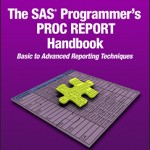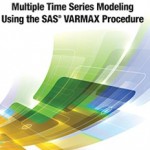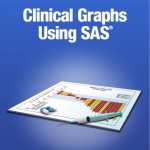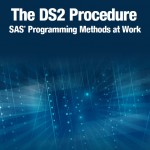Whether your New Year’s resolution is to get SAS certified or to become a more advanced SAS programmer, we’ve got you covered with these upcoming SAS Press books, many of which will be making their bookshelf debut at SAS® Global Forum 2016 in fabulous Las Vegas!
- The SAS® Programmer’s PROC REPORT Handbook: Basic to Advanced Reporting Techniques by Jane Eslinger includes everything you need to build perfect reports, every time. Ever wonder how to add a logo to your reports, or how to use PROC DOCUMENT in conjunction with PROC REPORT? Look no further! This handbook has it all! (1st Quarter 2016)

- Multiple Time Series Modeling Using the SAS® VARMAX Procedure by Anders Milhoj will teach you the time series analytical possibilities that SAS offers today. This book teachers beginning to advanced users how to use PROC VARMAX to analyze a time series and build advanced models! (1st Quarter 2016)

- Clinical Graphs Using SAS® by Sanjay Matange provides the knowledge, the code, and helpful examples to create common clinical graphs with SAS graphics tools such as the SG Procedures and the Graph Template Language. It teaches you how to create the complex health and life sciences graphs you need to analyze biostatistics data, clinical data, and submit drug approvals to the FDA. With the addition of new features in SAS 9.4 and helpful examples in this book, these graphs become positively easy to make! (1st Quarter 2016)

- The DS2 Procedure: SAS® Programming Methods at Work by Peter Eberhardt teaches you how to speed up your processing by using DS2 programming to perform work in threads and process observations in parallel. This book introduces you to Object Oriented Programming methods, DATA programs, user-defined methods, predefined packages, and threaded processing. DS2 is the next wave of programming languages in SAS that will have you simplifying your big data problems in a snap! (1st Quarter 2016)

- Exploratory Factor Analysis with SAS® by Erin S. Banjanovic and Jason W Osborne demystifies exploratory factor analysis in SAS with an applied and user-friendly approach, using real-world examples with real data. It provides guidance for implementing best practices for EFA in SAS and interpreting the results for end users. This book reviews each of the major steps in EFA: data cleaning, extraction, rotation, interpretation, and replication. Faculty teaching with this book will love this book for their classes, and individual readers can learn at their own pace, practicing and reinforcing the concepts as they go! (2nd Quarter 2016)

5 new SAS Press titles for the new year #SASBooks Click To Tweet
Got a great idea for our next upcoming title, or ready to write a book of your own? Learn more about how you can share your SAS knowledge by publishing with SAS Press. Or, contact us to let us know what book topics you’d like to see next!
